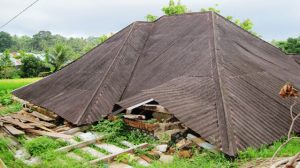Seismological Society of America > News

28 December 2018–A low-cost earthquake early warning system provided a map of expected ground shaking around the epicenter of February’s magnitude 6.4 Hualien earthquake within two minutes of the mainshock’s start, according to a new study by seismologists at the National Taiwan University, which deployed the system. The predicted shake … Continue Reading »
SSA announced 21 student and international members will receive travel grants to attend the Annual Meeting in Seattle, to be held 23–26 April 2019. These travel grants are made possible by member contributions to the Kanamori Fund, the General Fund and the Student Travel Fund. Grant recipients receive complimentary conference registration and a cash stipend for transportation, food and lodging. The 21 recipients of … Continue Reading »

18 December 2018–A closer look at small earthquakes that took place at the Oroville Dam in California’s Sierra Nevada foothills in February 2017—near the time when the dam’s spillway failed—suggest that the seismic activity was related to reservoir discharge that opened and closed fractures in the rock below the spillway. … Continue Reading »

International Travel Grant recipient Garmalia Mentor-William wanted to attend the 2018 Seismology of the Americas meeting to “meet other scientists, learn about new technologies and learn lessons from other countries” that could help Haiti – her home country – prepare for future earthquake disasters. After the 2010 M7.0 earthquake that … Continue Reading »

11 December 2018–Using data gleaned from historical reports, researchers have now identified the sources of some of the most destructive Indonesian earthquakes in Java, Bali and Nusa Tenggara, using these data to independently test how well Indonesia’s 2010 and 2017 seismic hazard assessments perform in predicting damaging ground motion. The … Continue Reading »
Gaining insight into where earthquake aftershocks might occur is a long-standing challenge in earthquake science, especially as some aftershocks can approach the size of the mainshock earthquake and can damage buildings and roads already weakened by the main earthquake. Phoebe Robinson DeVries and her coauthors are pursuing one way to … Continue Reading »




